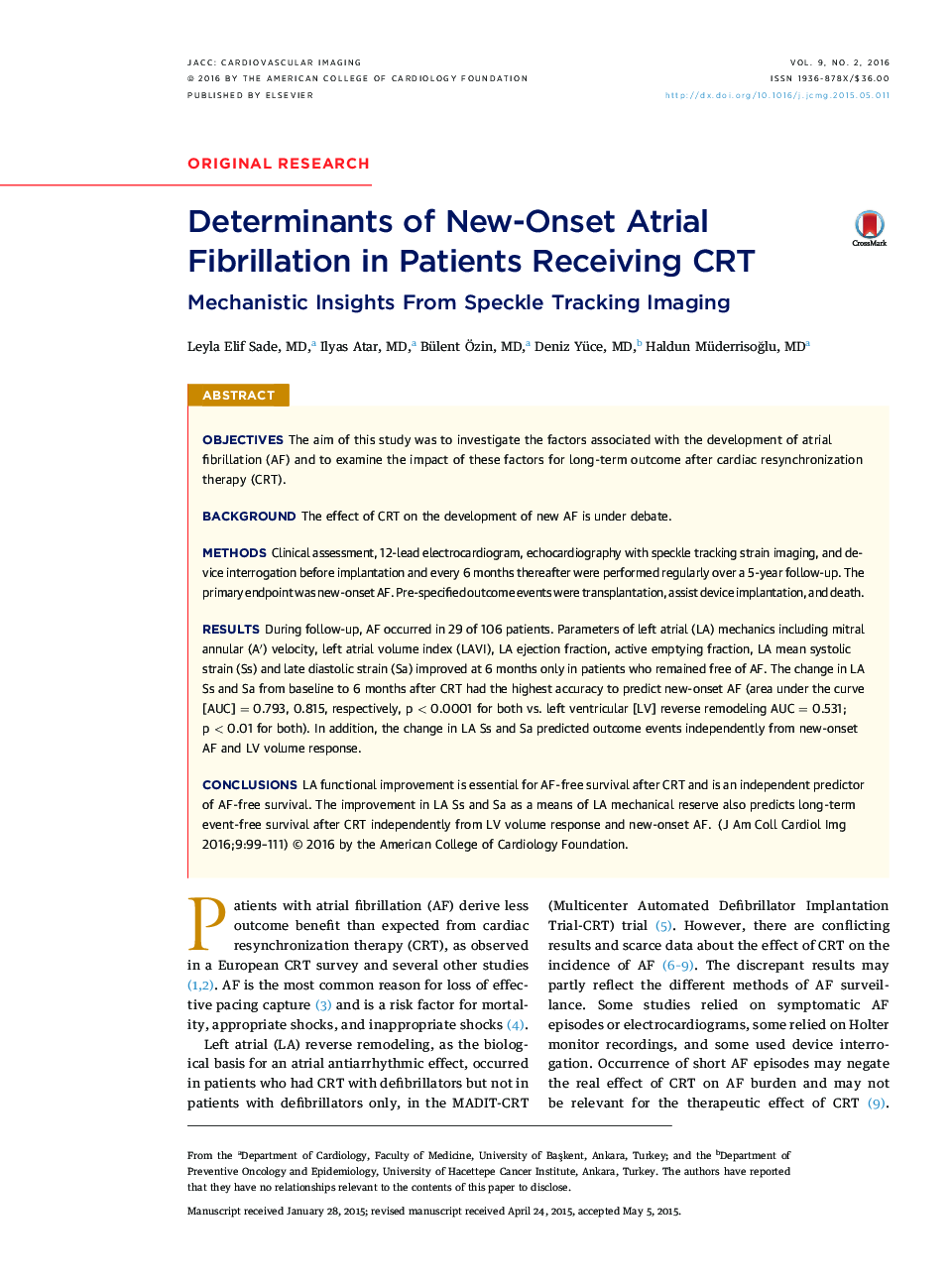| Article ID | Journal | Published Year | Pages | File Type |
|---|---|---|---|---|
| 2937614 | JACC: Cardiovascular Imaging | 2016 | 13 Pages |
ObjectivesThe aim of this study was to investigate the factors associated with the development of atrial fibrillation (AF) and to examine the impact of these factors for long-term outcome after cardiac resynchronization therapy (CRT).BackgroundThe effect of CRT on the development of new AF is under debate.MethodsClinical assessment, 12-lead electrocardiogram, echocardiography with speckle tracking strain imaging, and device interrogation before implantation and every 6 months thereafter were performed regularly over a 5-year follow-up. The primary endpoint was new-onset AF. Pre-specified outcome events were transplantation, assist device implantation, and death.ResultsDuring follow-up, AF occurred in 29 of 106 patients. Parameters of left atrial (LA) mechanics including mitral annular (A′) velocity, left atrial volume index (LAVI), LA ejection fraction, active emptying fraction, LA mean systolic strain (Ss) and late diastolic strain (Sa) improved at 6 months only in patients who remained free of AF. The change in LA Ss and Sa from baseline to 6 months after CRT had the highest accuracy to predict new-onset AF (area under the curve [AUC] = 0.793, 0.815, respectively, p < 0.0001 for both vs. left ventricular [LV] reverse remodeling AUC = 0.531; p < 0.01 for both). In addition, the change in LA Ss and Sa predicted outcome events independently from new-onset AF and LV volume response.ConclusionsLA functional improvement is essential for AF-free survival after CRT and is an independent predictor of AF-free survival. The improvement in LA Ss and Sa as a means of LA mechanical reserve also predicts long-term event-free survival after CRT independently from LV volume response and new-onset AF.
